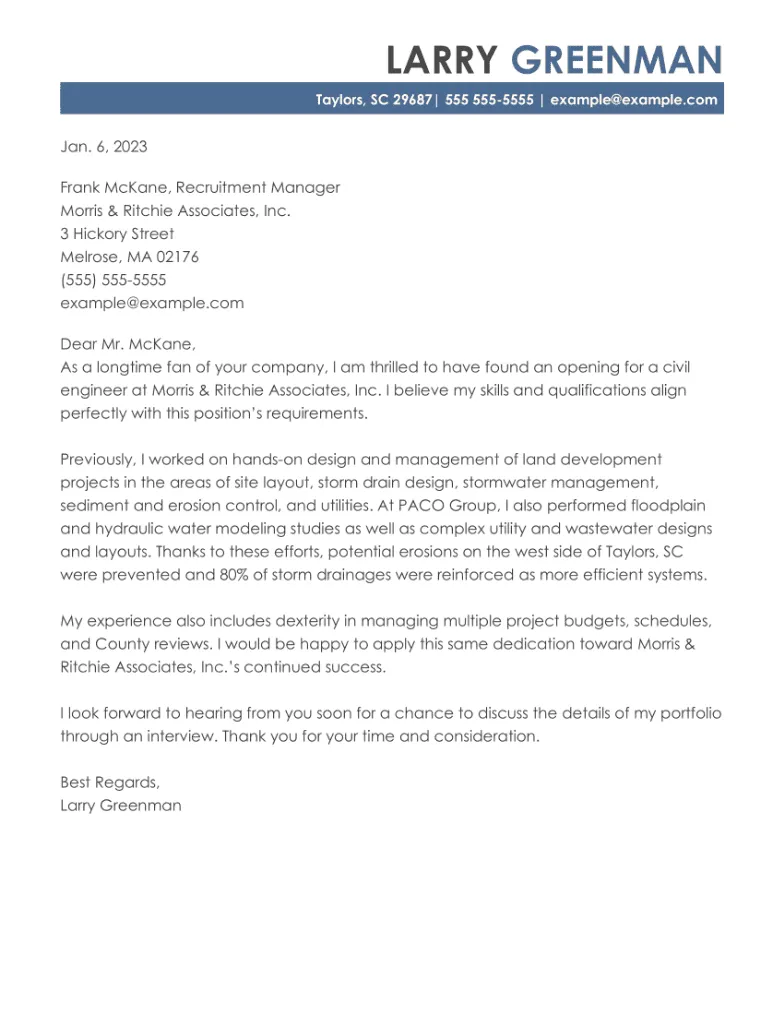Understanding the Engineering Cover Letter
The engineering cover letter is a critical document in your job application. It serves as your introduction to a potential employer, providing a snapshot of your skills, experience, and personality. Unlike a resume, which provides a factual overview, the cover letter allows you to tell a story, connect your qualifications to the specific job requirements, and express your enthusiasm for the opportunity. A well-crafted cover letter can significantly increase your chances of securing an interview, while a poorly written one can lead to your application being overlooked. This guide provides a comprehensive approach to writing effective engineering cover letters.
What is an Engineering Cover Letter
An engineering cover letter is a formal document that accompanies your resume when applying for engineering positions. Its primary purpose is to introduce you to the hiring manager and provide context for your application. It’s a chance to showcase your personality, articulate your career goals, and explain why you’re the ideal candidate for the role. The letter should be concise, focused, and tailored to the specific job and company. It should highlight the most relevant skills and experiences, demonstrating how you meet the requirements outlined in the job description. In essence, it’s a personalized marketing tool designed to convince the employer to learn more about you.
Why is an Engineering Cover Letter Important
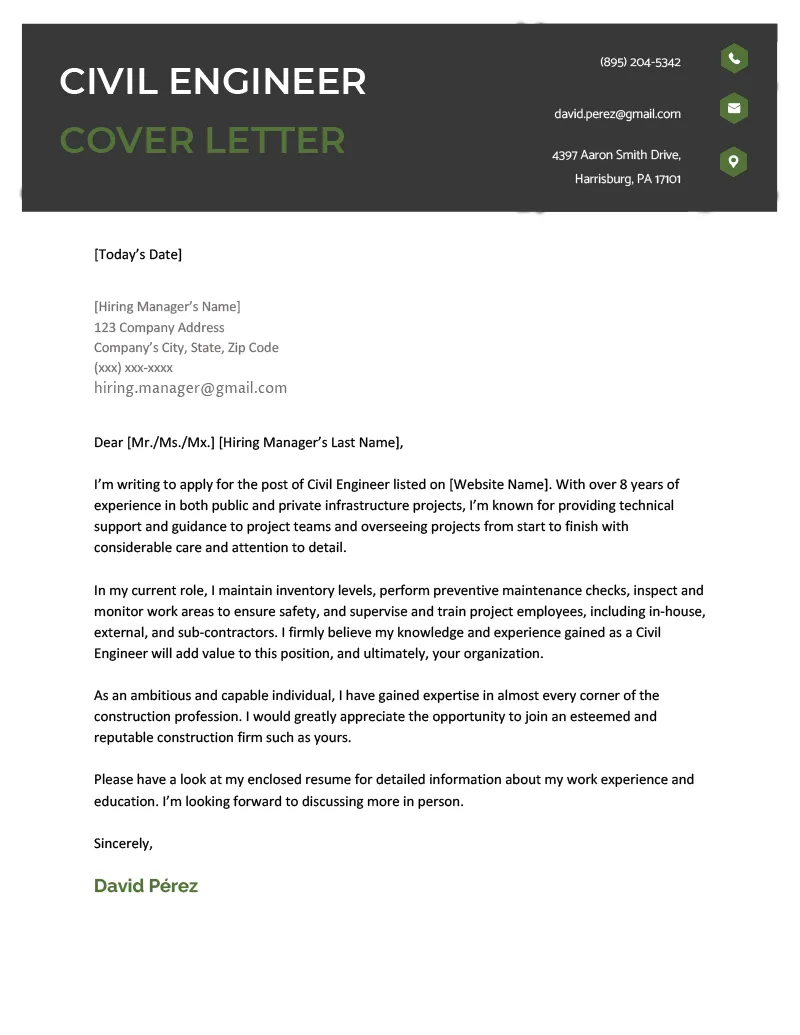
The importance of an engineering cover letter cannot be overstated. It’s your first impression, offering a chance to make a compelling case for why you’re the right fit. A cover letter demonstrates your communication skills, attention to detail, and genuine interest in the position. It allows you to elaborate on experiences and qualifications that might not be fully detailed in your resume. A well-written cover letter can set you apart from other applicants, especially in a competitive field like engineering. It’s also an opportunity to address any potential gaps in your resume or explain career transitions. Moreover, it shows that you’ve taken the time to research the company and tailor your application to their specific needs.
Key Components of an Engineering Cover Letter
A strong engineering cover letter consists of several key components, each playing a crucial role in effectively presenting your qualifications. These components, when combined, create a cohesive and persuasive narrative that captures the reader’s attention. These sections must be carefully constructed to ensure clarity, conciseness, and impact. Each section contributes to the overall goal of showcasing your suitability for the position and making a positive impression on the hiring manager. Understanding these elements is essential for crafting a cover letter that effectively communicates your value and increases your chances of landing an interview.
Contact Information and Date
At the top of your cover letter, include your contact information (name, address, phone number, and email address) and the date. This ensures that the hiring manager can easily reach you. Make sure your email address sounds professional. Choose a clear and readable font for your contact information.
Hiring Manager’s Information
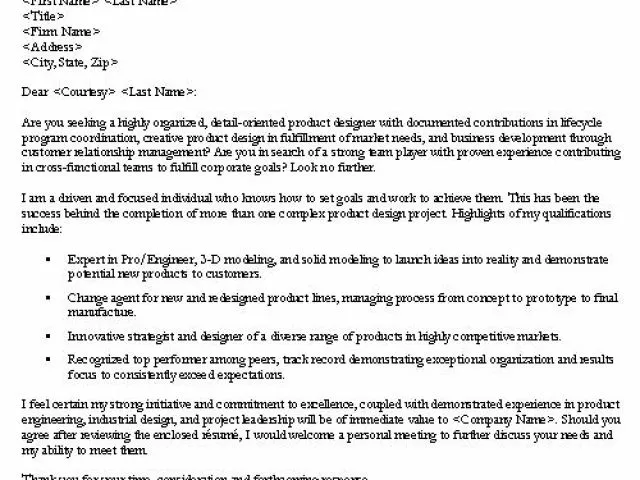
If possible, address the cover letter to a specific person (e.g., the hiring manager). Research the company’s website or LinkedIn to find the name and title of the person responsible for hiring. Addressing the letter directly demonstrates your attention to detail and genuine interest. If you can’t find a name, use a professional salutation like ‘Dear Hiring Manager’.
The Salutation
Use a professional salutation, such as ‘Dear Mr./Ms./Mx. [Last Name]’ or ‘Dear Hiring Manager’. Avoid generic greetings like ‘To Whom It May Concern.’ Ensure you use the correct title and spelling of the recipient’s name. If you are unsure of the gender, consider using a gender-neutral title like ‘Mx.’ to be respectful and avoid potential errors.
Crafting the Opening Paragraph
Your opening paragraph should grab the reader’s attention. State the position you’re applying for and how you found the job opening. Briefly mention your most relevant qualification or experience. This paragraph sets the tone and immediately demonstrates your understanding of the opportunity. It is important to immediately state the position you are applying for to show the hiring manager you’ve read the job description.
Highlighting Your Skills and Experience
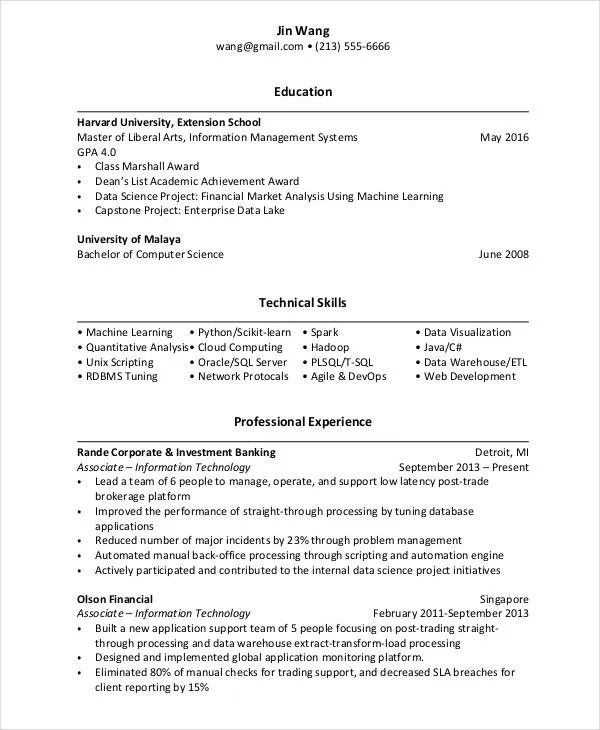
The body of your cover letter is where you showcase your skills and experience. Focus on the qualifications most relevant to the job description. Provide specific examples of your achievements and how they align with the company’s needs. Use action verbs to describe your accomplishments. Quantify your achievements whenever possible (e.g., ‘Increased efficiency by 15%’).
Quantifiable Achievements
Engineering is a field where results matter. Whenever possible, quantify your achievements with numbers. Instead of saying ‘Improved project management skills,’ say ‘Reduced project completion time by 20% through implementation of Agile methodologies.’ Use metrics to demonstrate the impact of your work. Numbers make your accomplishments more concrete and persuasive.
Technical Skills
List your technical skills, such as proficiency in specific software, programming languages, or engineering tools. Tailor this section to match the skills mentioned in the job description. If the job requires expertise in CAD software, highlight your experience with that particular software. This section shows that you possess the practical skills necessary for the role.
Soft Skills
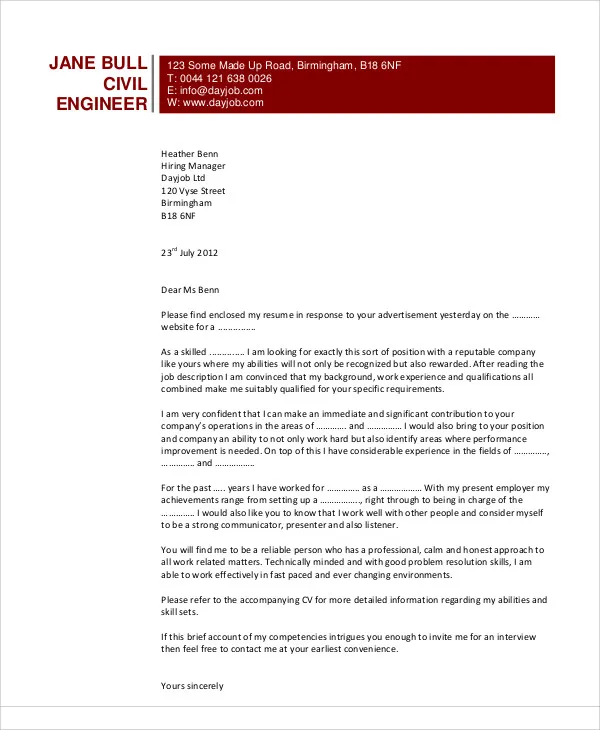
Don’t forget to mention soft skills like communication, teamwork, problem-solving, and leadership. Provide examples of how you’ve demonstrated these skills in your previous roles. For example, ‘Led a team of five engineers to successfully complete the project ahead of schedule, demonstrating strong leadership and communication skills.’
Tailoring Your Cover Letter to the Job
One of the most critical aspects of a successful cover letter is tailoring it to each specific job application. Generic cover letters rarely impress hiring managers. Customize your letter to align with the company’s values, the job description, and the specific requirements of the role. Show that you’ve taken the time to understand what the employer is looking for and how your skills and experience match their needs.
Researching the Company
Before writing your cover letter, research the company. Understand their mission, values, and recent projects. This information will help you tailor your letter to their specific needs and demonstrate your genuine interest. Visit their website, read news articles, and check their social media presence to gather relevant information.
Matching Skills to Job Requirements
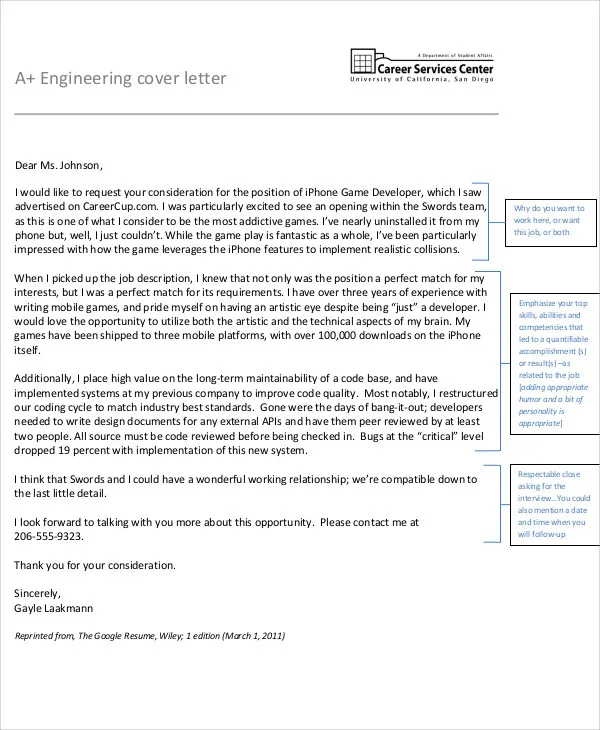
Carefully review the job description and identify the key skills and qualifications. Then, match your skills and experiences to those requirements. Use the same keywords and phrases from the job description in your cover letter. This approach ensures that your application is relevant and highlights your suitability for the role.
Structuring the Closing Paragraph
Your closing paragraph should reiterate your interest in the position and express your enthusiasm for the opportunity. It should summarize your key qualifications and reiterate your value to the company. Include a call to action, such as requesting an interview. Keep the closing concise and professional.
Expressing Enthusiasm and Interest
Show genuine enthusiasm for the position and the company. Avoid generic phrases. Instead, use specific examples of why you are excited about the opportunity. For example, ‘I am particularly drawn to your company’s commitment to sustainable engineering practices, and I am eager to contribute my skills to your team.’
Call to Action

End your cover letter with a clear call to action. Request an interview or express your availability for a follow-up discussion. Make it easy for the hiring manager to take the next step. For instance, ‘I am available for an interview at your earliest convenience and can be reached at [phone number] or [email address].’
Formatting and Proofreading
A well-formatted and error-free cover letter demonstrates your attention to detail and professionalism. Poor formatting or grammatical errors can create a negative impression. Always proofread your cover letter carefully before submitting it. Consider having a friend or career counselor review it as well. These are essential to making sure your letter stands out.
Font and Layout
Choose a professional and easy-to-read font, such as Times New Roman, Arial, or Calibri. Use a standard font size (11 or 12 points). Maintain consistent formatting throughout your cover letter. Use single-spacing within paragraphs and double-spacing between paragraphs. Use a clear layout with appropriate margins (1 inch on all sides) to enhance readability.
Grammar and Spelling Check
Proofread your cover letter meticulously for any grammatical errors, spelling mistakes, and typos. Use spell-check and grammar-check tools, but don’t rely on them entirely. Read your cover letter aloud to catch any awkward phrasing or inconsistencies. Ensure that your cover letter is polished and professional.
Example Engineering Cover Letter
Below is a sample cover letter to provide a guide and context to the aforementioned advice. Use this example as a template for your own letter, but ensure that you customize it to reflect your own experiences and the specific requirements of the job you’re applying for. Remember to replace the bracketed information with your own details and tailor the content to align with the target position and company. Always ensure the letter is well-written, free of errors, and professionally formatted. This example provides a framework, so use it as a foundation to craft your unique and compelling cover letter.
Engineering Cover Letter Templates
Using a template can be a great way to start, but make sure to personalize it. Many online resources offer free and paid engineering cover letter templates. These templates provide a structure and format to follow. However, remember to customize the template to match your specific skills, experience, and the job description. Don’t simply fill in the blanks; tailor the content to reflect your unique qualifications and make your application stand out. Use templates as a starting point.
Common Mistakes to Avoid
Avoiding common mistakes is crucial for writing an effective engineering cover letter. These mistakes can damage your chances of getting an interview. Be aware of these pitfalls to ensure that your application makes a positive impression.
Generic Cover Letters
Submitting a generic cover letter is one of the most significant mistakes. Generic cover letters are often rejected by hiring managers. Always tailor your cover letter to each specific job and company. Research the company, understand their needs, and demonstrate how your skills and experience align with their requirements.
Typos and Grammatical Errors
Typos and grammatical errors can make you appear unprofessional and careless. Proofread your cover letter meticulously before submitting it. Use spell-check and grammar-check tools, but also read your letter aloud to catch any mistakes that automated tools might miss. Having someone else review your letter is also a good practice.
Ignoring the Job Description
Failing to address the requirements listed in the job description is another common mistake. Carefully review the job description and highlight your skills and experiences that match those requirements. Use keywords from the job description in your cover letter. This demonstrates that you understand the job and are a good fit for the role.
Final Thoughts on Engineering Cover Letters
Writing a compelling engineering cover letter requires careful planning, attention to detail, and a strategic approach. By following the guidelines outlined in this guide, you can create a cover letter that effectively showcases your skills, experience, and enthusiasm, increasing your chances of landing an interview. Remember to tailor each letter to the specific job and company, and always proofread your work for any errors. A well-crafted cover letter is an invaluable tool in your job search and can significantly boost your career prospects. Use the advice outlined to gain a competitive edge in your job search.
